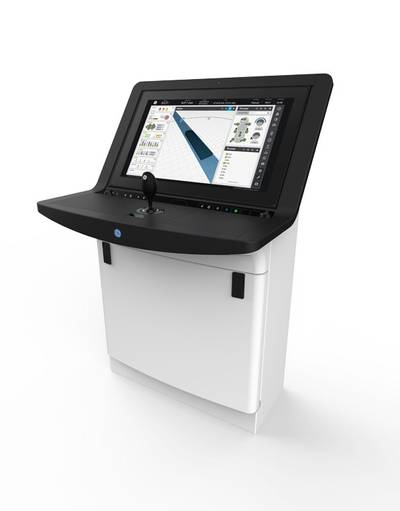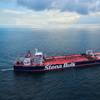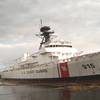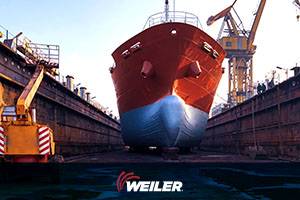New Dynamic Positioning System from GE
GE’s Power Conversion business debuted its latest Dynamic Positioning (DP) system at OTC. It is more energy efficient, better integrated and—most importantly—more mariner friendly, GE said.
Since they were introduced some 50 years ago, DP systems have become increasingly complex in their configurations and in their operation. Sensors have become more sophisticated, there are more of them and the same level of increased complexity applies to the electrical and propulsion systems. The computer control at the heart of a ship’s positioning system also is more sophisticated, but the basic principle of DP remains the same: to hold position with a computer system that takes signals from a range of sensors to sense environment, heading, position and attitude and issues commands to thrusters and propellers. Overall, it is in charge of the complex processes of maintaining a ship on station, a process that needs a high level of system automation so that a single operator can manage the vessel.
“As the sophistication and complexity of DP systems has evolved, it has led to the risk that DP operators may have become preoccupied with managing the computer rather than on managing the primary task of controlling the ship, its position, heading and course,” said Paul English, marine leader of GE Power Conversion. With GE’s new system, we are giving DP back to the operator. We are now taking DP control out of the engineering world and putting it back into the marine world. We are turning it back into a nautical instrument. In the future, the DP operator will be able to focus on his real job, controlling the ship, and not be distracted by the task of manipulating and controlling a complex computer system.”
GE Power Conversion has achieved this with a new human-machine interface (HMI). The control panel is very clean and uncluttered with very few control devices. Its 26-inch touchscreen is tiltable to suit each operator’s preference for standing or sitting in front of the screen, or moving around it. It accommodates operators of different heights and is equally visible in a whole range of lighting conditions on the bridge, especially reflections from the sun and artificial light. Screen displays in an operator selectable range of languages allow the operator to access all system functionality in his/her mother tongue.
GE Power Conversion has put considerable time and effort into improving the ergonomics of the HMI. It has made use of the great wealth of dedicated professional engineers, designers and human psychologists who study human interaction with machines at the GE Global Research, UX (User Experience) Innovation Lab to produce a HMI display with improved convenience, efficiency and effectiveness and more in accordance with the expectations of a mariner.
The new DP control system also embodies improvements to energy efficiency and sustainability. As part of GE’s ecomagination portfolio, the new DP system supports GE’s commitment to deliver cleaner and more-efficient sources of energy. The system includes a new “Energy-Efficiency” mode, which can be used when appropriate. For example, when a supply vessel is alongside a rig, what the captain wants above all else is high-accuracy positioning. But if the same supply vessel is standing by at a significant distance off the rig, GE’s new “Energy-Efficiency” mode DP can be engaged, resulting in a greater degree of position accuracy tolerance with substantially reduced fuel consumption. Studies have shown that fuel saving may be as much as 10 percent or more with an associated NOx reduction of as much as 20 percent, depending on environmental factors and exact operational profile.
www.gepowerconversion.com













